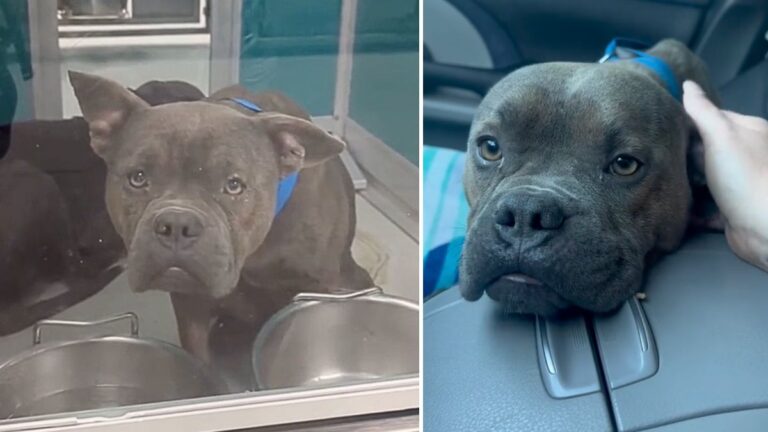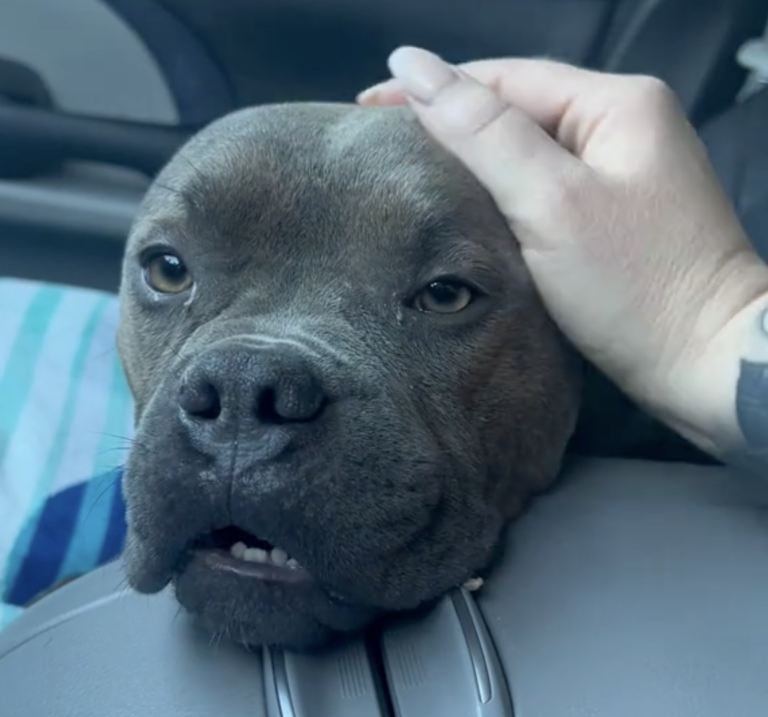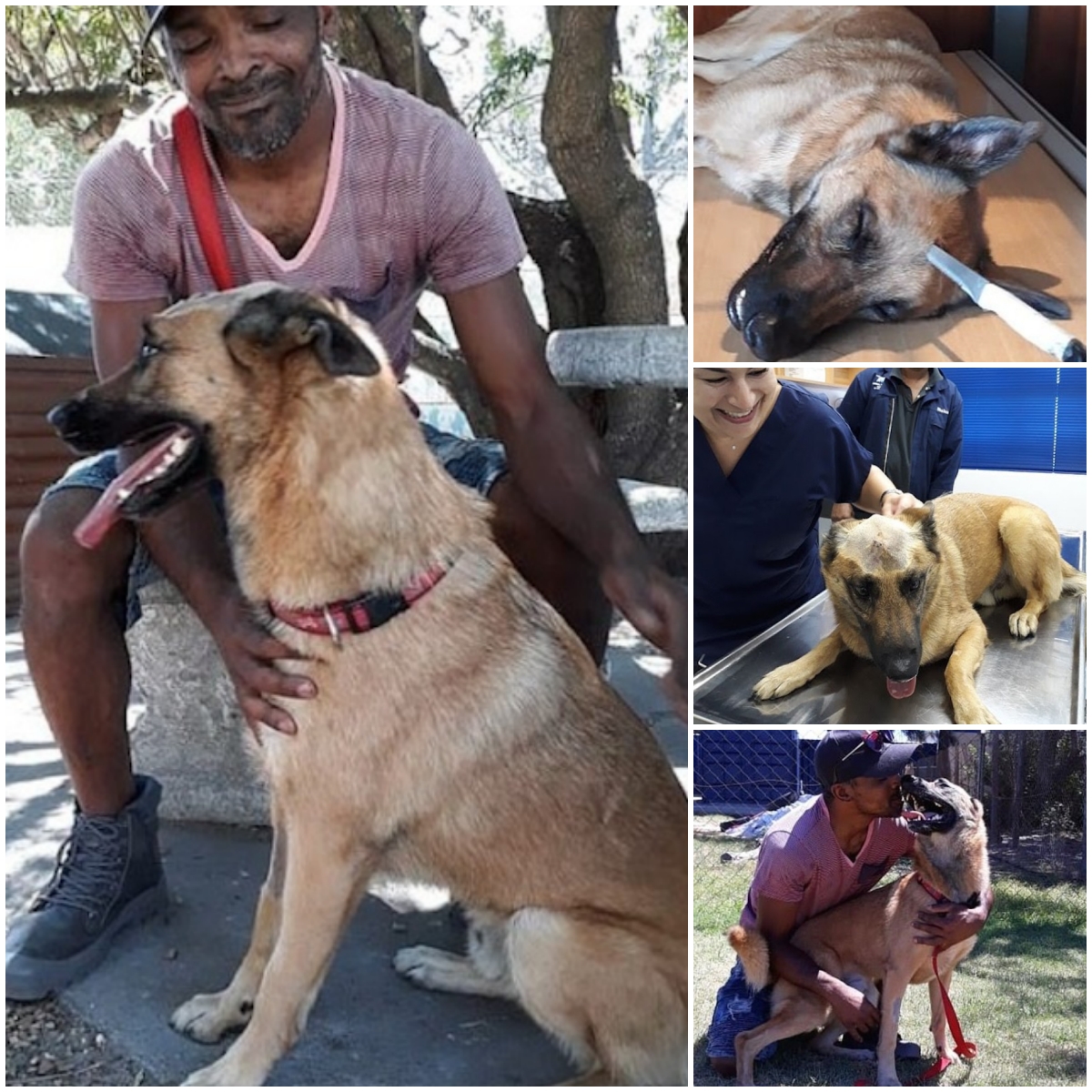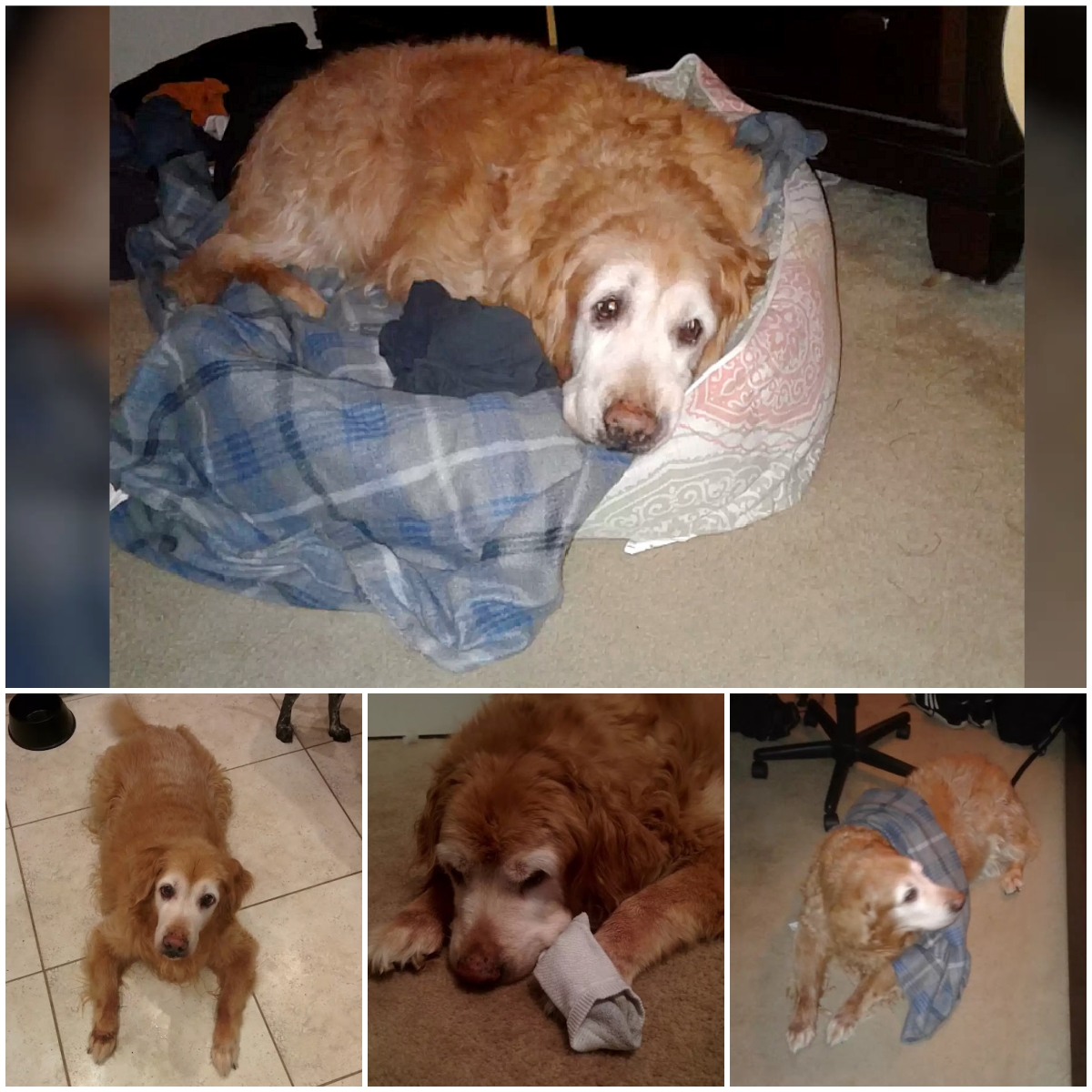
Thankfully, a foster home stepped up just in time to save Grimm from a terrifying, lonely death. Grimm was removed from the shelter, and almost immediately began to show that he wasn’t a shy dog after all, he was just a scared shelter dog who didn’t feel safe. If you were to compare Grimm today side by side with Grimm in the shelter, you might think they are different dogs!
Now, Grimm is happy, social, and playful, and nothing like the terrified shelter dog shut down by stress and fear. In his foster home, Grimm has had time to adjust and decompress, and now his personality is glowing. Grimm loves spending time with the other dogs in his foster home and loves the humans who rescued him.
A beautiful blue English Bulldog mix, Grimm has the sweetest little face and would be perfect for someone looking for a small to medium Bully breed. To inquire about adopting Grimm, you can contact Kayla Winrow—who goes by @Salvage.Souls—directly on TikTok. Located in Oklahoma City, Grimm is available to out-of-state adopters!
@salvage.souls Grimm is looking for his forever people ️ We are located in Oklahoma City and welcome out of state adopters. If you’re interested in adopting, please DM ME – I don’t see all the comments….. Also – Please consider visiting your local shelter to find out ways you can help an animal in need. And remember – please do not judge a dog based on their response to being in a shelter. It’s a cold, loud, very scary place for an animal. Adopt don’t shop. #adopt #foster #shelter #dogsoftiktok #rescue #dogs Boundless Worship – Josué Novais Piano Worship
It’s important to not judge a book by its cover when you meet a scared dog in shelter settings. Shelters are extremely stressful environments—they’re loud, full of unknown smells, and packed with strange people and dogs. If a dog feels nervous in the shelter, it’s not necessarily because they are shy or anxious. Confident dogs can become shut-down dogs in shelters very easily, so it’s important not to assume a dog is anti-social just because the dog may react with nervousness at first.
Also Read:Hannah the Shelter Mama: Her 11 Puppies All Found Homes, So Why Is She Still Alone?
When you adopt a rescue dog, it’s also important to give them time to adjust outside of the shelter.
“When new dogs are stressed out and not given that calm environment and period of adjustment, the only way they know how to get their point across is to act out or ‘misbehave,’” says a guide to introducing a newly adopted dog to your home from the Humane Society of Hartford County. “The dog may growl or become nippy out of confusion or fear. What is expected of [them]? Where are [they] allowed?”
It takes time for a shelter dog, shutdown or otherwise, to get used to their new life. Here are a few tips for how to help a shutdown dog adjust to your home:

- Start small with everything! For example, when you first bring your new dog home, create the dog or keep them in one specific room. They’ll need a day or two just to adjust to being in a new place, and having access to everything at once can be very overwhelming and confusing. Similarly, start small by introducing the new dog to other family members, doing training sessions, going on walks, etc.
- Avoid leaving home with the dog for at least two weeks. No trips to the pet store, no car rides, no unnecessary vet visits. Your dog has just gone through a huge transition, so you should be keeping other transitions in their life to a minimum.
- Give your new dog time to exercise but don’t overdo it. In the shelter, dogs might not get exercise/yard time more than once or twice a week. They’ll have a lot of pent-up energy, but you also don’t want to let your dog get over tired while they are still recuperating from their time at the shelter.
- Ignore bad behavior for the first two weeks as your dog gets used to their new rules. While it can be annoying to hear crying and/or barking, the times they bark/whine can be good learning opportunities for both of you. Maybe your dog is asking you for something, or simply acting out of confusion. Either way, take “bad” behavior (like a bark, whine, or cry) as an opportunity to learn how to communicate with your dog.
- Praise often and with enthusiasm! Dogs in shelters get very little one-on-one time with humans, and it can be overwhelming to suddenly have someone’s full attention. Praising your dog when they interact with you or exhibit positive/wanted behaviors can help your dog understand what is wanted and that you are a source of positive reinforcement.

Above all, you need to be patient with your new shelter dog. It takes months for a dog to fully decompress and become themselves, and adopting a dog means committing for the long haul.
The 3-3-3 rule is a basic guideline for the timeline you can expect when you bring home a new shelter dog. Here’s how the 3-3-3 rule works.
During your dog’s first three days in your home, the only priority should be rest and decompression. This is the time for your dog to simply adjust to their new reality and finally get some sleep outside of the shelter.
During the first three weeks of having your shelter dog, they’ll be slowly showing you their personality. Once they’ve decompressed, it’s time for them to open up while they learn what is expected in your home. This is the time to do some basic training, create a solid routine with your dog, and develop trust.
At around the three-month mark, most rescue dogs begin to feel more confident and at home with their new families. During this time you build trust bonds that allow your dog to focus on being a dog and less on learning the ropes. All dogs take different amounts of time to adjust to their new homes, but in general, you can expect to really feel like your dog is part of the family after about three months.
Also Read:Rescued After a Bus Accident, Brave Mama Dog Delivers Puppies in the Most Unexpected Way!





